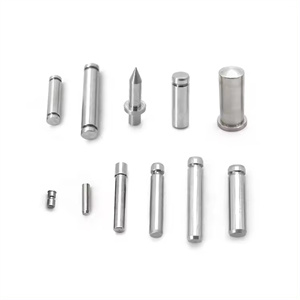Machining and producing knurled shafts is a process that requires precise operation and strict control. Knurled shafts are commonly used in mechanical transmissions, operating handles, and other components to increase friction and facilitate manual operation. In terms of material selection, medium carbon steel such as 45 steel or stainless steel with certain strength and toughness are often used. The preparation of blanks is usually achieved through forging, rolling, or directly selecting suitable sized round bar materials.
The machining process mainly includes the following important steps:
Turning: First, turn the round bar material to obtain the basic shape and dimensions of the shaft, including diameter, length, shoulder, etc.
Knurling processing: This is the key step of the knurling shaft. Use a knurling tool to press patterns on the surface of the shaft. The common forms of embossing include straight embossing and mesh embossing. In the process of rolling, it is necessary to control the pressure, feed rate, and rotation speed of the rolling tool to obtain clear, uniform, and depth appropriate rolling patterns. For example, when making a manually adjustable knob roller shaft, the depth and spacing of the rollers need to be designed according to ergonomics to provide a good grip.
Grinding: For hobbing shafts with high precision requirements, grinding may be necessary to improve the surface roughness and dimensional accuracy of the shaft.
In order to improve the wear resistance and corrosion resistance of the knurled shaft, heat treatment (such as quenching, tempering) or surface treatment (such as chrome plating, zinc plating) will also be carried out.
In terms of quality inspection, measuring tools are used to measure the dimensional accuracy and shape accuracy of the shaft, as well as roughness meters are used to measure surface roughness. At the same time, the quality of the embossing will also be checked, such as the clarity, uniformity, and depth consistency of the pattern. In some precision instruments, the requirements for dimensional accuracy and surface quality of the knurled shaft are very high, and any small defects may affect the performance and operation of the instrument.
CNC Turning is a commonly used method for producing Shafts. This technology precisely controls the turning process by using a computer numerical control (CNC) lathe to produce Shafts that meet specific requirements.
In the process of producing Shafts using CNC Turning, the first step is to prepare raw materials such as bars and install them onto the CNC lathe. Then, by programming and inputting the size, shape, and other parameters of Shafts, the CNC lathe will automatically perform turning processing according to these parameters. CNC lathes can precisely control the movement of cutting tools and cutting depth, thereby ensuring the accuracy and quality of Shafts.
The advantages of CNC Turning in producing Shafts lie in its high precision, high efficiency, flexibility, and repeatability. Due to the use of computer control in CNC lathes, high-precision machining can be achieved, ensuring that the size and shape of the Shafts meet the design requirements. Meanwhile, CNC lathes are capable of continuous processing, greatly improving production efficiency. In addition, CNC Turning also has high flexibility to meet the production needs of Shafts of different sizes, shapes, and materials. Finally, CNC Turning also has good repeatability, ensuring that the produced Shafts have consistent quality and performance.
Therefore, CNC Turning is a very suitable method for producing Shafts, widely used in mechanical manufacturing, automotive manufacturing, aerospace and other fields.
